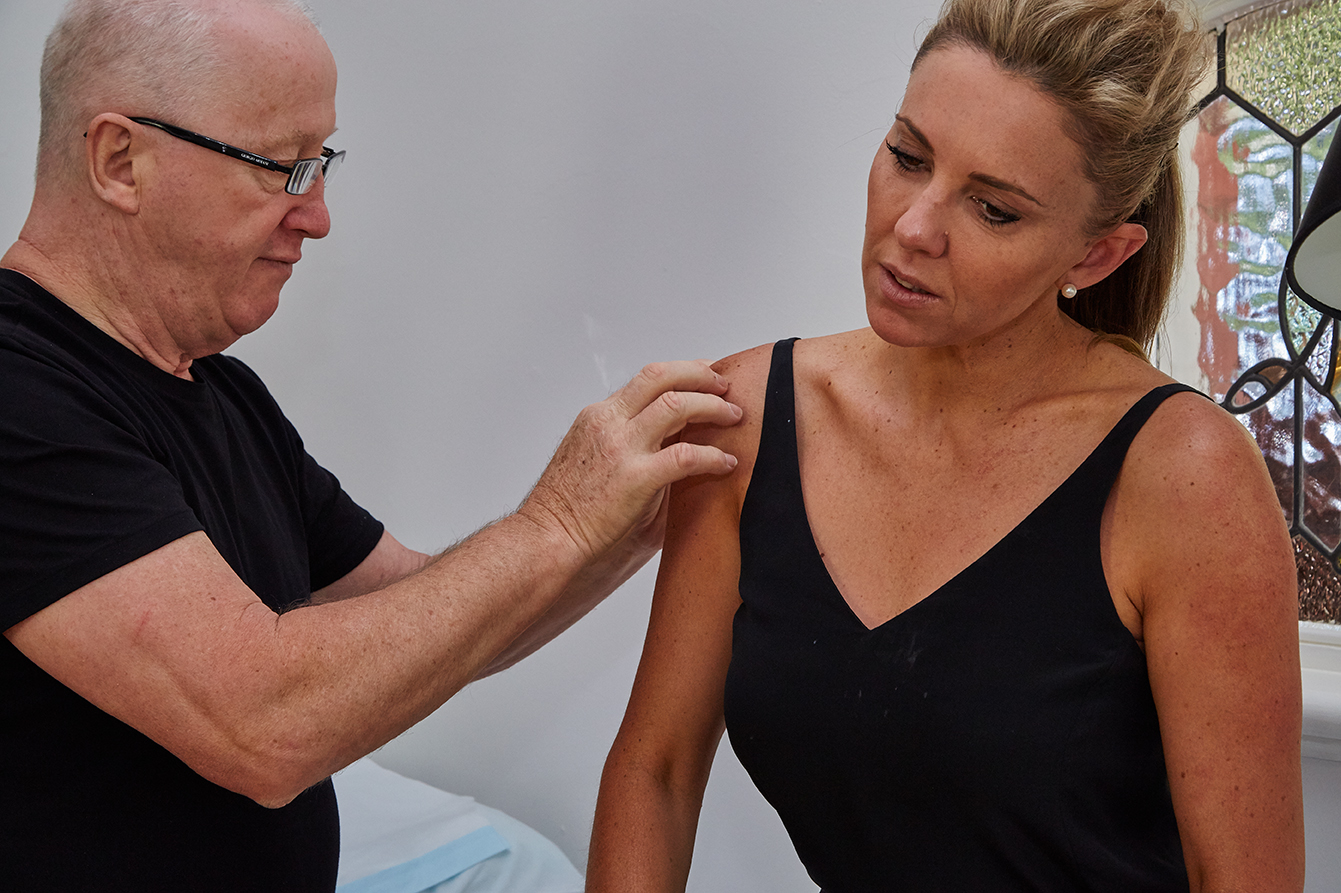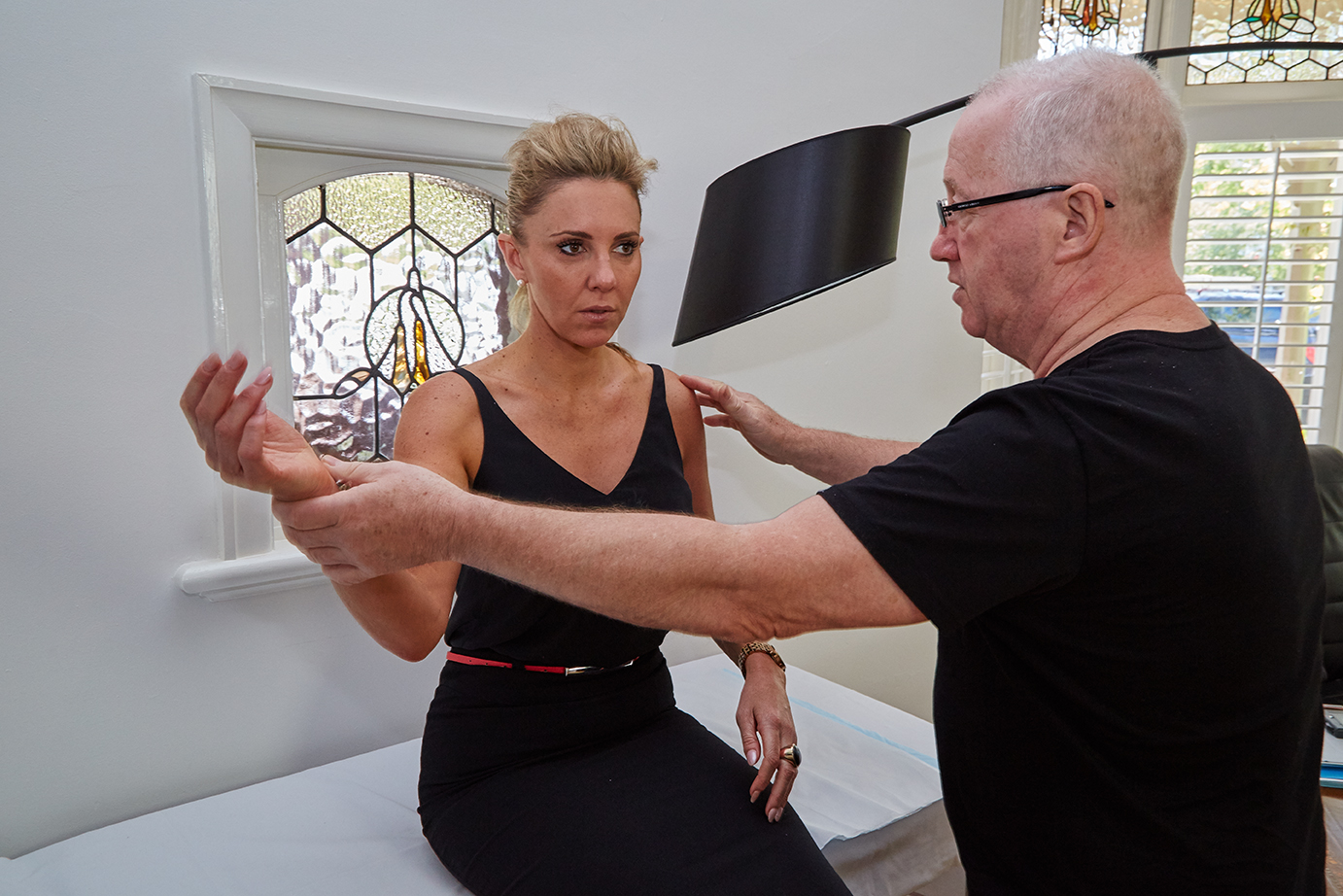 Rotator Cuff Tear
Rotator Cuff Tear
The rotator cuff is made up of four small muscles and tendons that help rotate and stabilize the shoulder joint. Collectively they are used to perform overhead motions such as lifting our arms to comb our hair, dressing ourselves, or reaching for an item on a top grocery shelf.
Rotator cuff tears may occur with repeated use of the arm for overhead activities. In younger patients, an acute tear can also occur while playing sports or after an injury, such as a fall.
Symptoms of rotator cuff tears usually involve pain over the front and top of the shoulder. This pain is usually exacerbated when trying to lift the arm above the shoulder. It can also radiate down the arm. Over time the pain may become more noticeable at rest and no longer goes away with medications. The pain is often associated with weakness of the arm and limits simple activities such as dressing yourself or combing your hair. There may be stiffness, swelling, a crackling sensation, loss of movements, and tenderness in the front of the shoulder.
To confirm the diagnosis an ultrasound or MRI is often required. MRI is preferred as it can more accurately determine the extent (complete or partial-thickness) and size of the tear. An MRI will also indicate the quality of the tendon and muscle involved in the tear, as well as how much the tear has retracted from its normal position. This is important in determining the best course of treatment for your shoulder.
Most rotator cuff repairs can be performed arthroscopically (‘key-hole surgery’).The torn tendon is reattached to its normal (anatomic) position using special sutures and anchors in the bone.
Should there be multiple problems in the shoulder as well as a rotator cuff tear, these can be addressed at the same time rather than undergoing separate procedures.
Although repairing the torn rotator cuff tendon is often straightforward, waiting for the tendon to heal directly back onto bone takes time, often a few months. Most patients are discharged the day following surgery. A sling is required for the first 4-6 weeks in order to protect the repair. It is advisable to avoid lying on the operated shoulder and using the arm to lift anything heavier than a coffee cup during this time. A tailored exercise program is required to assist in regaining your range of motion and strength. These will all be discussed at your consultation with Mr Moran.
 Bursitis
Bursitis
Burstitis refers to pain in the shoulder due to irritation of the bursa (surrounding tissue of the rotator cuff) under the roof of the shoulder (acromion). This results in inflammation of the bursa which is exacerbated when you raise the arm above the shoulder.
The pain typically occurs during overhead activities such as when you are dressing yourself, having a shower or reaching for something on a top shelf. The pain is often worse at night, affects your sleep patterns or does not allow you to sleep on that side. Other symptoms you may have are weakness and stiffness.
An x-ray is useful to confirm a bony spur and also look for associated problems such as arthritis of the acromioclavicular joint (joint between the collar bone and shoulder blade) as well as calcium deposits in the tendon.
An ultrasound will often confirm bursitis It may also reveal an associated rotator cuff tears.
To treat Bursitis Mr Moran will usually explore Non-operative measures first such as rest or modification of the activities or work that exacerbates the pain. Analgesics can also help to control the pain. Physiotherapy is useful to ensure your shoulder movements are optimised to prevent impingement. Often patients will require a cortisone injection to directly reduce the inflammation in the shoulder.
The best treatment will be determined by a number of factors, including your age, the duration and severity of your symptoms, and the presence of other problems. If you are still symptomatic despite a course of non-operative treatment, you may benefit from surgery in the form of an arthroscopic subacromial decompression. This is a surgical procedure to increase the space (decompress) under the shoulder tip (acromion) to allow the rotator cuff tendons to glide freely.
